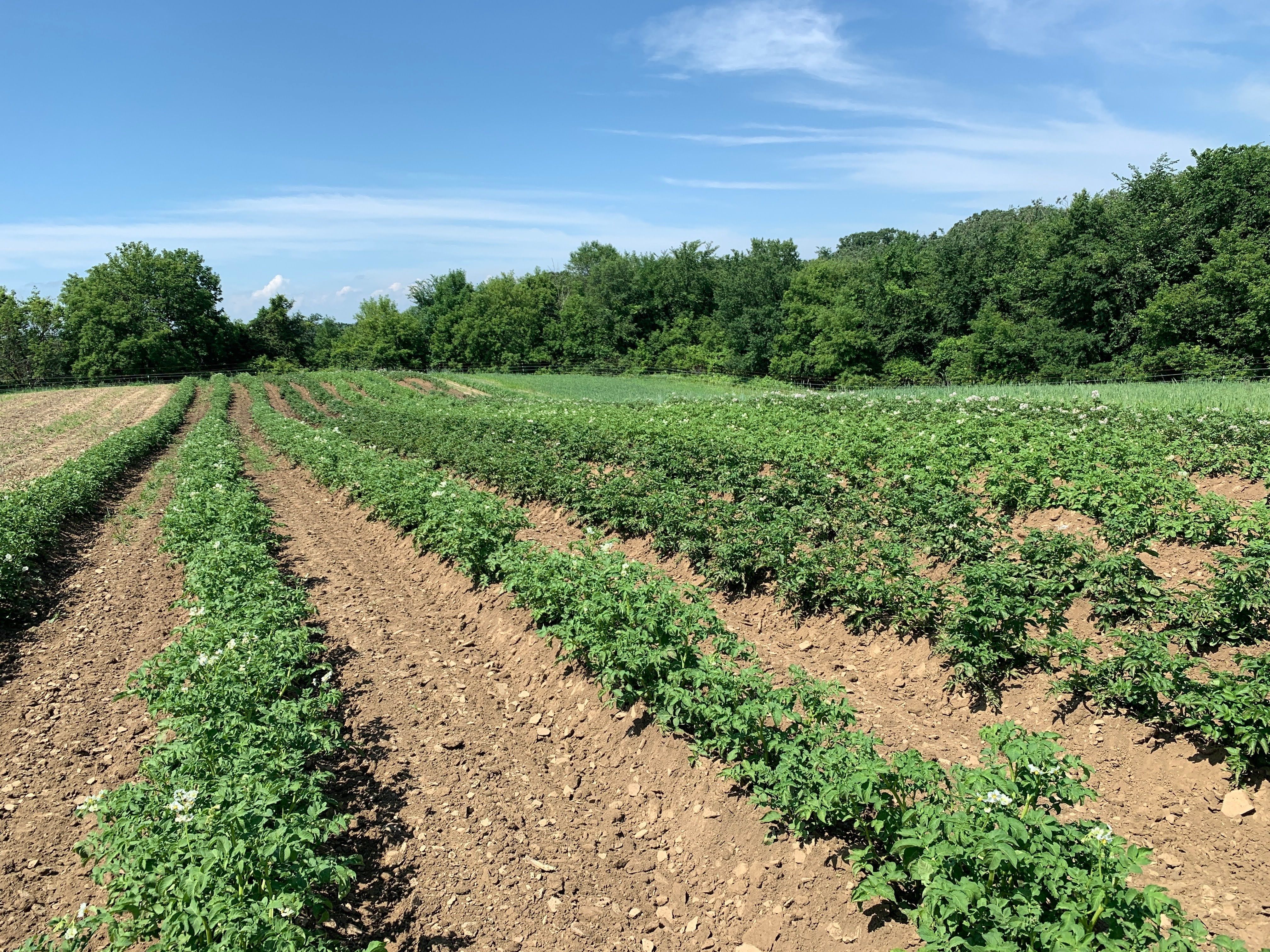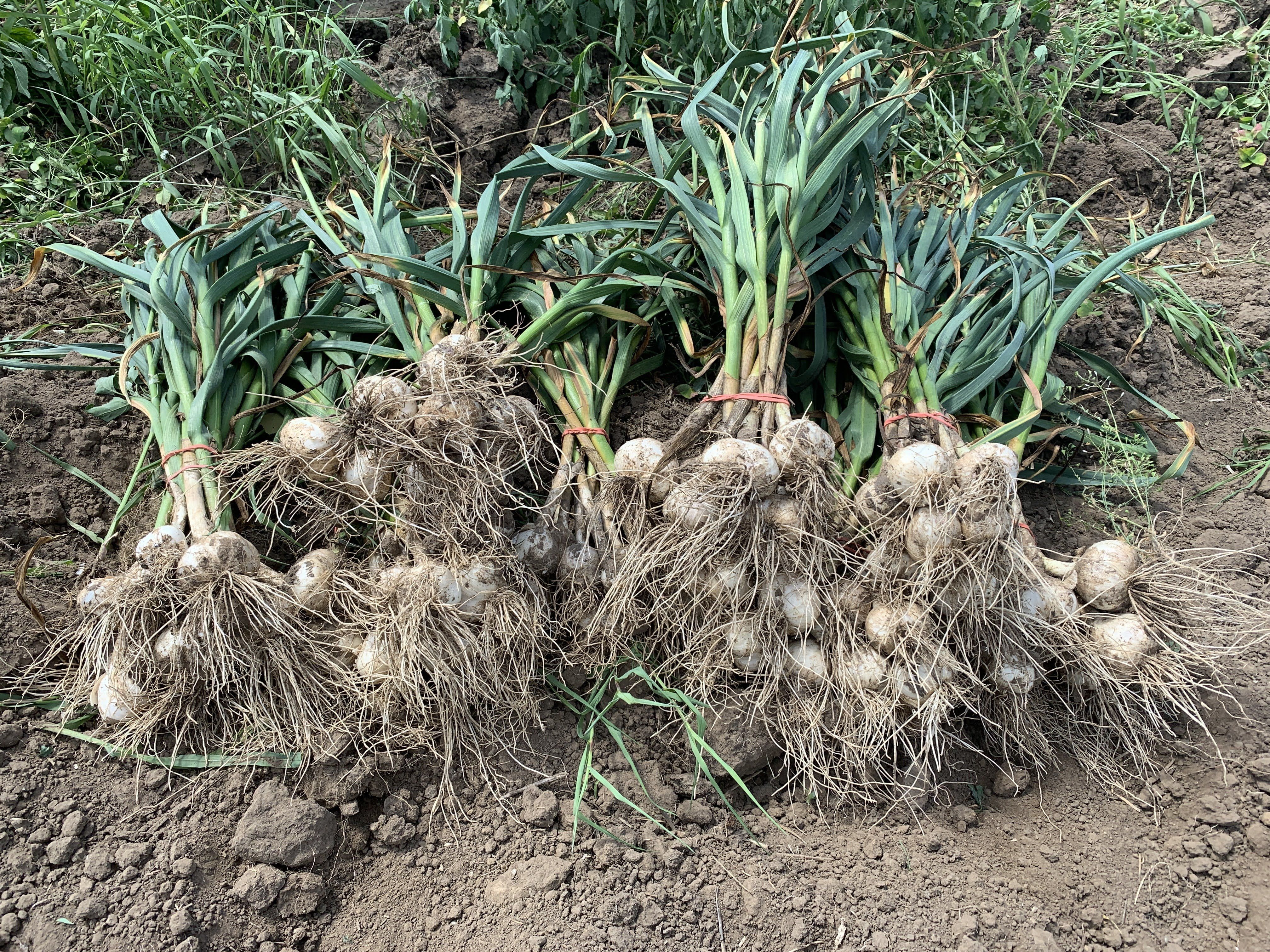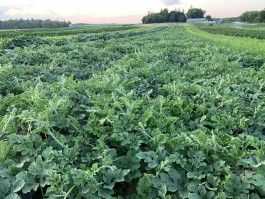Farm News and Crop Updates
First, just a note to please see the end of the newsletter for a matter we are seeking member feedback on concerning plastic bag use for greens.
Hats off to the crew for pushing through the last two week's of hot, humid weather. They showed up for work after having heard of heat advisories in the morning news with recommendations that people stay in air conditioned spaces. Hmm. As you all know, plants keep growing (at rapid speed) when it's hot out, so our life goes on. We hydrate, take breaks, and try to restrict greenhouse work and especially physically demanding work to the morning hours, when possible. On the topic of the crew, I was reminded that I haven't really introduced this year's crew to our members. We plan to do staff introductions over the next few newsletters - stay tuned!
One of the big events of this past week was seeding of our fall/storage carrots. After two of our summer plantings fared poorly -- with germination hindered by soil surface crusting from pounding rain, and in the second case partially flooded out by the 6-inch rainfall we received two weeks ago -- we're trying something different with our large fall planting. We covered the whole field with a sheet of air-, light-, and water-permeable fabric that will soften the impact of rainfall while retaining moisture at the soil surface. We will take the fabric off in a week or 10 days once the carrots are germinating.


The next milestone of the season will be garlic harvest, likely next week. We will mow the tops off the plants, undercut them to lift the bulbs out of the soil, then haul them to our greenhouse benches to cure for about two weeks with flans blowing on them 24/7. Onions will take their place in the greenhouse about 2-3 week later.
Crop outlook: We decided to wait one more week to put carrots in farm shares, in order to let them size up a little more. Expect those next box, along with the first picking of green beans, serrano peppers, and larger volumes of tomatoes and cucumbers!
Notes on items for this week's box:
- Sweet onions are fresh, so not cured with the dried outer layer you normally associate with onions. We will spray them clean, but you can expect some partially dried layers that need to be removed prior to eating. Store in your fridge, rather than cupboard. These are mild onions, so suitable for both fresh consumption or sauteing. Each bunch will have 3-5 onions, depending on the size.
- We have a good sized planting of broccoli that we're harvesting for this week's shares, but the heat over the past two weeks has not been ideal for its development. While the variety we grow this time of year is considered "heat-tolerant," 95 degrees never agrees with broccoli. The heat, and in particular wide temperature swings we have experienced, adversely affects the shape of the head and uniformity of the beads. So you will not see the classic smooth domed appearance, but rather more "topography" to the heads with beads of varying size. The eating quality is still great, it's just a little less photogenic.
- This will be the last of the rhubarb for the season. It's time to let this perennial crop grow out and replenish its energy reserves for next spring's harvest.
- Tomatoes and cucumbers are all starting out, so share volumes are fairly modest and not every member will get them this week. Once we are harvesting hundreds of pounds of each in a week or two, you can expect more substantial allocations for shares. The cherry tomatoes will be a mix of Sun Gold (orange) and Sakura (red), with the occasional bag receiving a taste of Black Cherry tomatoes. The full-sized tomatoes are predominantly Pink Berkeley Tie-Die, Black Prince, Cherokee Purple, and Damsel (all heirloom or heirloom-type), but we will also do our first harvest of red hybrid slicer tomatoes, as well. This week will be either/or.
- Basil continues to grow exceptionally well with this hot weather. If you have more than you need for fresh eating, it is so easy to preserve by putting in a food processor with a little oil and freezing in ice cube trays. We have never regretted having those cubes to pull out over the winter.
Seeking member input about packaging
We are getting ready to buy more produce bags that we use for our bagged greens, and occasionally other items. Thus far, we have used standard plastic bags like the ones you see in most grocery store produce departments. A couple members have expressed that they would like to see less plastic use in farm shares - and no doubt many other members have the same view but haven't told us. We feel the plastic bags do a great job of keeping produce fresh, but are also conflicted about the disposability. So before making another big purchase of plastic bags, we ordered a sample of Biobags, which are 100% compostable, to see how they worked. They cost about 4-times more than plastic bags - not ideal, a cost we would consider absorbing if our members strongly support our use of them.

We want to spell out our assessment of the compostable bags and ask what you would like us to do. Here are the main takeaways from our trial storing spinach and salad mix in compostable Biobags:
- The Biobags are larger in size than the plastic bags we have been using for salad mix and spinach, so there will be a little extra material at the top of the bag. It does mean a little wasted material, but it's not that consequential.
- The Biobags have a very different texture than plastic bags - softer, stretchier, and almost a little stickier. We are neutral on this difference.
- The green color of the Biobags makes it more difficult to see what's inside, though they are still somewhat transparent.
- The Biobags, while not as strong as plastic bags, seemed plenty strong for holding greens. We are told they are temperature sensitive, so will get weaker at higher temperatures.
- We did notice a bit of an odor from some of the Biobags, particularly when it is first opened up off the roll. We did not notice any transfer into the flavor of the greens, but this characteristic is a negative, from our perspective.
- The most consequential finding, which we want to make sure members will tolerate, is they did not keep the greens as fresh as plastic bags. After 2-3 days, any greens that were in contact with the bag began to wilt. After a week, most of the greens were wilted, whereas in the plastic bag they were still perky. If we decide to switch to Biobags, we would highly recommend that members transfer the greens into their own plastic bag or other container after the share is delivered.
We were disappointed with that final point, that the greens began wilting after a few days in the Biobags. However, we can still see the value of switching to them if enough members strongly prefer use of compostable bags and are willing to transfer to a different bag in order to maintain freshness. Please weigh in by taking this anonymous 2-question survey. We ask you to do this as soon as possible, since we will need make a decision and place an order early next week.
Take the 1-minute survey to let us know which kind of bag you'd like us to use in the future. We will use your responses to guide our decision - thanks for taking the time.
Have a wonderful week!
Dana




